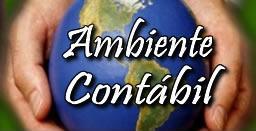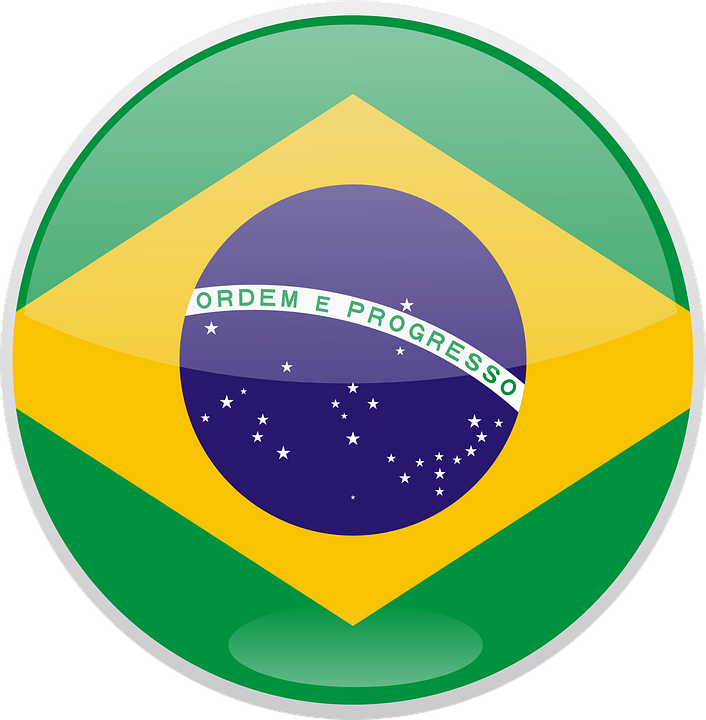Perception of corruption in academic environment: empirical analysis from accounting students at the Federal University of Ceará (UFC)
DOI:
https://doi.org/10.21680/2176-9036.2020v12n1ID19623Keywords:
Corruption. Perception. Accounting.Abstract
Purpose: Corruption is a worldwide phenomenon that affects, indistinctly, both the poor and the rich. As a multidisciplinary phenomenon, understanding the problem has become a complex issue given the diversity of concepts it encompasses and how it presents itself in countries. In this sense, the present work aims to analyze significant aspects of the social profile that influence the perception of corruption by Accounting students at the Federal University of Ceará.
Methodology: The research is descriptive regarding its objectives, quantitative as to its nature and uses a survey as its procedures. A Likert scale questionnaire was used, anonymously filled, composed by four groups of questions, in which 20 questions related to corruption (comprehension, professional impact, current structure of the Accounting program and institutional mechanisms for its combat). The analysis of the results was done through descriptive statistics.
Results: Intermediate positions that do not reveal the total denial or confirmation of the questions presented were considered, which shows that most of the opinions are still under construction. The exception is due to the level of understanding of the phenomenon, which was deemed satisfactory by the researchers. Regarding the intermediate answers, the results point to the need of multiple solutions for the studied phenomenon: improve the way the entire program treats the theme, enhance the understanding of the extent of corruption as a phenomenon that also affects companies and social organizations, and withdraw of the students' understanding that the program should provide knowledge about the modus operandi of corrupt acts.
Contributions of the Study: The study contributes to the development of new ways of approaching corruption in the academic environment, notably the Accounting Program, in order to raise awareness about the subject.
Downloads
References
Aguilera, R. V; & Vadera, A. K. (2008). The dark side of authority: antecedents, mechanisms, and outcomes of organizational corruption. Journal of Business Ethics, 77, p. 431-49.
Angeles, L., & Neanidis, K.C. (2015). The persistent effect of colonialism on corruption. Economica, vol. 82, p. 319-349.
Argandona, A. (2003). Private-to-private corruption. Journal of Business Ethics, 47,
p. 253-67.
Ashforth, B. E., Gioia, D. A., Robinson, S. L., & Treviño, L. K. (2008). Re-viewing organizational corruption. Academy of Management Review, 33: 670-684.
Auriol, E., Straub, S., & Flochel, T. (2016). Public Procurement and Rent-Seeking: The Case of Paraguay. World Development, vol. 77, p. 395-407.
Bageac, D., Furrer, O., & Reynaud, E. (2011). Management Students’ Attitudes toward Business Ethics: A comparison between France and Romania. Journal of Business Ethics, vol. 98, n. 3, p. 391-406.
Bayar, G. (2005). The role of intermediaries in corruption. Public Choice. 122. p. 277-98.
Beck, T., Demirgürc-Kunt, A., & Maksimovic, V. (2005). Financial and legal constraints to growth: does ?rm size matter? Journal of Finance, vol. 60, n. 1, p. 137–77.
Blackburn, K. (2012). Corruption and development: explaining the evidence. The Manchester School, vol. 80, n. 4, p. 401-428.
Brunetti, A., & Weder, B. (2003). A free press is bad news for corruption. Journal of Public Economics, vol. 87, n. 7-8.
Camerer, L. (2018, june 9). An Evaluation of Anti-corruption Strategies. Recovered from: http://www.iss.co.za/Pubs/Monographs/No65/CONTENTS.HTML.
CE. (2019, april 8). Convenção de Direito Civil da União Europeia. Recovered from: http://www.derechoshumanos.net/normativa/normas/europa/corrupcion/1999-Convenio-civil-sobre-corrupcion.htm
CE. (2019, april 8). Convenção de Direito Penal da União Europeia. Recovered from: http://www.derechoshumanos.net/normativa/normas/europa/corrupcion/1999-Convenio-penal-sobre-corrupcion.htm,
Collier, M. W. (2002). Explaining corruption: an institutional choice approach. Crime, Law & Social Change, vol. 38, n. 1.
Croix, D. L., & Delavallade, C. (2011). Democracy, rule of law, corruption incentives and growth. Journal of Public Economic Theory, vol. 13, n. 2, p. 155-187.
Decreto n. 3.678, de 30 de outubro de 2000. Promulga a Convenção sobre o Combate da Corrupção de Funcionários Públicos Estrangeiros em Transações Comerciais Internacionais, concluída em Paris, em 17 de dezembro de 1997. Recovered from: http://www.planalto.gov.br/ccivil_03/decreto/D3678.htm.
Dimant, E., & Tosato, G. (2017). Causes and effects of corruption: what has past decade’s empirical research taught us? A survey. Journal of Economic Surveys, vol. 0, n. 0, p. 1-22.
Dzhumashev, R. (2014). The two-way relationship between government spending and corruption and its effects on economic growth. Contemporary Economic Policy, vol. 32, n. 2, p. 403-419, 2014.
Fisman, R., & Gatti, R. (2002). Decentralization and corruption: evidence across countries. Journal of Public Economics, vol. 83, n. 3.
Freitas, A. J., Diehl, C. A., & Macagnan, C. B. (2011). A percepção sobre ética de estudantes de curso de graduação em Ciências Contábeis. Revista de Educação e Pesquisa em Contabilidade, vol. 5, n.1, p. 21-49.
Friedrich, C. J. (1993). Corruption concepts in historical perspective. Political Corruption: A Handbook, edited by A. J. Heidenheimer, M. Johnston and V. T. LeVine. London: Transaction Publishers, p. 15-24.
Genemo, A. (2019, april 4). Perceptions and Attitudes of University Students towards corruption: the case of Adama Science and Technology University Prospective Graduates of 2005 E. C. Recovered from: https://www.academia.edu/11664752/PERCEPTIONS_AND_ATTITUDES_OF_UNIVERSITY_STUDENTS_TOWARDS_CORRUPTION_THE_CASE_OF_ADAMA_SCIENCE_AND_TECHNOLOGY_UNIVERSITY_PROSPECTIVE_GRADUATES_OF_2005_E.C
Gil. A. C. (2008). Métodos e Técnicas de Pesquisa Social. 6ª. ed. São Paulo: Atlas.
Graaf, G. D. (2007). Causes of corruption towards a contextual theory of corruption. Public Administration Quarterly, vol. 31, n. 1.
Green, P. E., & Rao, V. R. (1970). Rating Scales and Information Recovery – How Many Scales and Response Categories to Use. Journal of Marketing, v. 34, p. 33-39.
Haikio, L. (2012). From Innovation to Convention: Legitimate Citizen Participation in Local Governance. Local Government Studies, vol. 38, n. 4, p. 415-435.
Hodge, A., Shankar, S., Rao, D. S. P., & Duhs, A. (2011). Exploring the links between corruption and growth. Review of Development Economics, vol. 15, n. 3, p. 474-490.
IT. (2018, march 1). Global Corruption Report 2007: Corruption and Judicial System. Recovered from: https://www.transparency.org/whatwedo/publication/global_corruption_report_2007_corruption_and_judicial_systems.
Jancsics, D. (2014). Interdisciplinary perspectives on corruption. Sociology Compass, vol. 8, n. 4, p. 358-372, 2014.
Johnson, N., La Fountain, C., & Yamarik, S. (2011). Corruption is bad for growth. Public Choice, vol. 147, n. 3, p. 377–393.
Karhunen, P., & Ledyaeva, S. (2012). Corruption Distance, Anti-corruption Laws and International Ownership Strategies in Russia. Journal of International Management, vol. 18, n. 2, p. 196-208.
Karstedt, S. (2018, june 9). The culture of inequality and corruption: a cross-national study of corruption. Recovered from: http://www.aic.gov.au/en/events/seminars/2001/~/media/conferences/occasional/karstedt_2.ashx.
Kis-Katos, K., & Schulze, G. G. (2013). Corruption in Southeast Asia: a survey of recent research. Asian-Pacific Economic Literature, vol. 27, n. 1, p. 79-109.
Klitgaard R. (1998). Controlling Corruption. Berkeley: University of California Press.
Latinobarómetro. (2019, april 8). Recovered from: http://www.latinobarometro.org/lat.jsp.
Lei n. 8.666, de 21 de junho de 1993 (1993). Regulamenta o art. 37, inc. XXI, da Constituição Federal, institui normas para licitações e contratos da Administração Pública e dá outras providências. Recovered from: http://www.planalto.gov.br/ccivil_03/leis/l8666cons.htm.
Llulaku, N., & Berxulli, D. (2019, april 4). Student Perceptions of Workplace Corruption and its Effect on their Academic Motivation. The European Journal of Social and Behavioral Sciences, vol. XX. Recovered from: https://www.futureacademy.org.uk/files/images/upload/ejsbs220.pdf.
Lodhia, S. K., & Burritt, R. L. (2004). Public sector accountability failure in an emerging economy. International Journal of Public Sector Management, vol. 17, n. 4, p. 345-359.
Marquette, H. (2012). ‘Finding god’ or ‘moral disengagement’ in the fight against corruption in developing countries? Evidence from India and Nigeria. Public Administration and Development, vol. 32, p. 11-26.
Martins, V., Amorim, D., & Mansur, C. (2018, june 9). Brasil joga R$ 1 trilhão no lixo por ano com corrupção, descaso e incompetência. Recovered from: https://www.em.com.br/app/noticia/economia/2013/08/25/internas_economia,439540/brasil-joga-r-1-trilhao-no-lixo-por-ano-com-corrupcao-descaso-e-incompetencia.shtml.
Mashali, B. (2012). Analyzing the relationship between perceived grand corruption and petty corruption in developing countries: case study of Iran. International Review of Administrative Sciences, vol. 78, n. 4, p. 775-787.
Mbaku, J. M. (2008). Corruption Cleanups in Africa: Lesson from Public Choice Theory. Journal of Asian and African Studies, vol. 43, n. 4, p. 427-456.
Morris, S. D. (2008). Disaggregating Corruption: A comparison of participation and perceptions in Latin America with a focus on Mexico. Bulletin of Latin American Research, vol. 27, n. 3, p. 388-409.
Moschovis, G. (2010). Public spending allocation, fiscal performance and corruption. The Economic Society of Australia, vol. 29, n. 1, p. 64-79.
Nascimento, R. S. (2012). Análisis empírico de la acción internacional em la lucha contra la corrupción en los contextos europeo y americano. Editora Académica Española.
OEA. (2019, april 8). Recovered from: http://www.oas.org/es/sla/ddi/tratados_multilaterales_interamericanos_B-58_contra_Corrupcion.asp.
OECD. (2019, april 8). Recovered from: https://www.oecd.org/daf/anti-bribery/convcombatbribery_spanish.pdf.
ONU. (2019, april 8). Recovered from: https://www.unodc.org/documents/brussels/UN_Convention_Against_Corruption.pdf.
Paskin, D. (2013). Attitudes and perceptions of public relations professionals towards graduating students’ skills. Public Relations Review, vol. 39, n.3, p. 251-253.
Patrick, D. J. (1978). The Corruption of a State. The American Political Science Review, vol. 77, n. 3, p. 958-973.
Pellegrini, L. (2011). Corruption, development and the environment. New York: Springer.
Persson, T., Tabellini, G., & Trebbi, F. (2003). Electoral Rules and Corruption. Journal of the European Economics Association, vol. 1, n. 4.
Pillay, S., & Kluvers, R. (2014). An institutional theory perspective on corruption: the case of developing democracy. Financial Accountability & Management, vol. 30, n. 1.
PRS Group. (2019, april 8). Recovered from: https://www.prsgroup.com/explore-our-products/international-country-risk-guide/.
Resolução 2016 NBC TA 240 (R1). (2016). Dispõe sobre a Responsabilidade do auditor em relação à fraude, no contexto da auditoria de demonstrações contábeis. Recovered from: http://www2.cfc.org.br/sisweb/sre/detalhes_sre.aspx?Codigo=2016/NBCTA240(R1).
Rivas, M. F. (2013). An experiment on corruption and gender. Bulletin of Economic Research, vol. 65, n. 1, p. 1-30.
Rose-Ackerman, S. (1996). Democracy and grand corruption. International Social Science Journal, vol. 48, p. 365-80.
_____. (1999). Corruption and government: causes, consequences and reform. Cambridge: Cambridge University Press.
_____. (2002). A corrupção e a economia global. Brasília: Universidade de Brasília.
Ruhl, J. M. (2011). Political corruption in Central America: assessment and explanation. Latin American Politics and Society, vol. 53, n. 1, p. 33-58.
Sánchez, J. R. (2018, june 9). Los delitos de corrupción de funcionário y criminalidad organizada. Recovered from: https://www.unifr.ch/ddp1/derechopenal/obrasportales/op_20080612_49.pdf.
Shihata, I. F. I. (1997). Corruption: a general review with an emphasis on the role of the World Bank. Journal of Financial Crime, vol. 5, n. 1, p. 12-29.
Shim, D. C., & Eorm, T. H. (2009). Anticorruption effects of information communication and technology (ICT) and social capital. International Review of Administrative Sciences, vol. 75, n. 1, p. 99-116.
Shleifer, A., & Vishny, R. W. (1993). Corruption. The Quarterly Journal of Economics, vol. 108, p. 599-617.
Shmidt, D. (2007). Anti-corruption: What do we know? Research on preventing corruption in the post-communist world. Political Studies Review, vol. 5, p. 202-232.
Swamy, A., Knack, S., Lee, Young, & Azfar, O. (2001). Gender and corruption. Journal of Development Economics, vol. 64, p. 25-55.
Teichmann, F. (2017). Anti-bribery control and incentives as agency theory approaches. Academic, Journal for Business, Administration, Law and Social Sciences, vol. 3, n. 3, p. 9-18.
World Bank. (2018, march 1). Recovered from: https://databank.worldbank.org/data/databases/control-of-corruption.
Zaloznaya, M. (2014). The Social Psychology of Corruption: Why it does not exist and why it should. Sociology Compass, vol. 8, n. 2, p. 187-2002.
Downloads
Published
How to Cite
Issue
Section
License
Authors who publish in this magazine agree with the following terms:
Authors keep the copyrights and concede the right of its first publication to the magazine. The work piece must be simultaneously licensed on the Creative Commons Attribution Licence which allows the paper sharing, and preserves both the author identity and the right of first publication to this magazine.
Authors are authorized to assume additional contracts separately, to not-exclusively distribution of the paper version published in this magazine (e.g.: publish in institutional repository or as a book chapter), with the author identity recognition and its first publication in this magazine.
Authors are permitted and stimulated to publish and distribute their papers online (e.g.: in institutional repository or on their personal webpage), considering it can generate productive alterations, as well as increase the impact and the quotations of the published paper.
Creative Commons - Atribuição-NãoComercial-SemDerivações 4.0 Internacional.


 Português (Brasil)
Português (Brasil) English
English Español (España)
Español (España)


